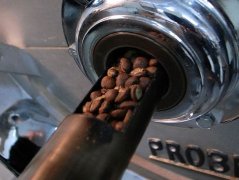Hard coffee planting tips for a cup of coffee
Geographically, there are three coffee growing regions worldwide-East Africa and the Arabian Peninsula, Southeast Asia and the Pacific Rim, and Latin America.
Coffee grown in different regions has different flavors-the soil, climatic conditions and cultivation methods of a country make coffee produced in that country have a special flavor. French master winemakers call this phenomenon "regional style."
Geographically, there are three coffee growing regions worldwide-East Africa and the Arabian Peninsula, Southeast Asia and the Pacific Rim, and Latin America.
Some species of coffee trees can grow to 30 to 40 feet tall.
However, to make it easier to pick coffee beans, people often try to make coffee trees less tall. On average, a coffee tree produces only 0.5 kilograms of coffee powder per year. And for most coffee lovers, it only takes a week to finish this coffee!
There are two types of coffee that are economically important: arabic coffee beans and east african coffee beans. Arabica coffee grows better at high altitudes, its flavor is much more refined than other coffees, and its caffeine content is only 1% of the coffee's total weight. As its name suggests, East African coffee is rich in taste, resistant to pests and diseases, and high in yield per plant. This coffee is grown at low altitudes and tastes bitter. Starbucks buys only high-quality Arabica coffee.
During harvest season, the coffee trees are covered with bright red coffee cherries. Unroasted coffee beans are just the seeds of coffee cherries.
Like other fruits, coffee cherries grow on trees. Soil, climate, altitude, and other plant species around coffee trees can all affect coffee flavor.
Coffee fruit skin is very thick, slightly bitter taste. The pit below the peel is sweet and similar in texture to grapes. The inner layer of the kernel, a membrane that protects the seed. This film resembles the protective coating of apple seeds. Remove the membrane and you'll see green beans-usually two. After washing the coffee beans, they are ready for roasting

Important Notice :
前街咖啡 FrontStreet Coffee has moved to new addredd:
FrontStreet Coffee Address: 315,Donghua East Road,GuangZhou
Tel:020 38364473
- Prev

Coffee Tree species Segmentation Coffee planting Environment requires in-depth understanding of Coffee
One of the characteristics of a coffee tree is that its fruit can bear fruit several times a year, and another is that flowers and fruits (also known as cherries) coexist at different stages of ripening. The style of the whole coffee industry is influenced by the fickle nature. If the fruit is too ripe, the beans in it will rot. If it is not ripe enough, the beans picked will not ripen by themselves. So bean pickers
- Next

Coffee roasting knowledge Coffee roasters need to master the skills to accurately adjust the curve
The baker is a key figure in the soul, just like a chef, how to cook a delicious and exquisite dish is all in his hands. Before buying raw beans, the baker must understand the flavor and condition of coffee beans. He must also have considerable experience and judgment, just like buying ingredients, hand-select defective beans, raw bean processing plant after the purchase of coffee.
Related
- Beginners will see the "Coffee pull flower" guide!
- What is the difference between ice blog purified milk and ordinary milk coffee?
- Why is the Philippines the largest producer of crops in Liberia?
- For coffee extraction, should the fine powder be retained?
- How does extracted espresso fill pressed powder? How much strength does it take to press the powder?
- How to make jasmine cold extract coffee? Is the jasmine + latte good?
- Will this little toy really make the coffee taste better? How does Lily Drip affect coffee extraction?
- Will the action of slapping the filter cup also affect coffee extraction?
- What's the difference between powder-to-water ratio and powder-to-liquid ratio?
- What is the Ethiopian local species? What does it have to do with Heirloom native species?

